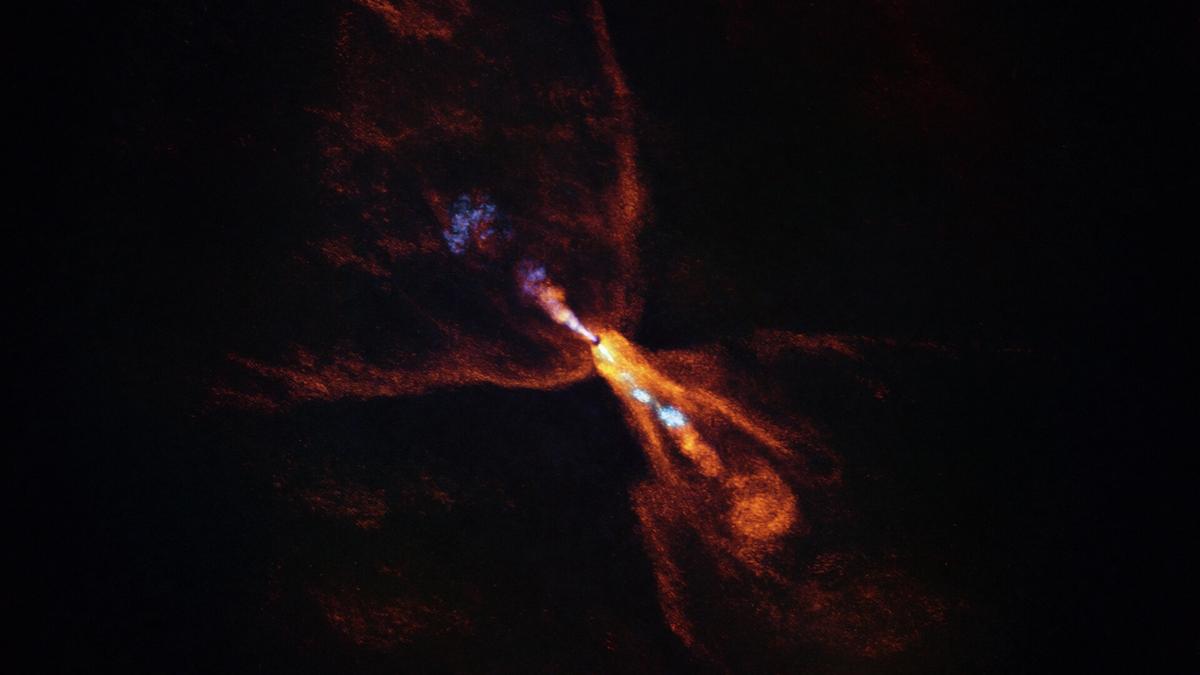HOPS-315 Discovery

- 26 Jul 2025
In News:
Astronomers, for the first time, have observed solid rock condensation from vapor around a newborn protostar, HOPS-315, located in the Orion Molecular Cloud. This breakthrough offers unprecedented insight into the earliest stages of rocky planet formation, similar to how Earth likely formed.
About HOPS-315
- Type: Protostar (young, still-forming star)
- Location: Orion constellation (~1,300 light-years from Earth)
- Key Feature: Surrounded by a tilted protoplanetary disc of dust and gas, allowing deep observational access to its planet-forming region.
Instruments & Research Collaboration
- Telescopes Used:
- James Webb Space Telescope (JWST) – Spectral analysis via NIRSpec and MIRI instruments.
- Atacama Large Millimeter/submillimeter Array (ALMA) – Millimeter-wavelength mapping of gases and dust.
- Research Consortium: Scientists from France, the Netherlands, Sweden, Taiwan, and the USA.
- Published In: Nature (2025)
Key Observations & Findings
- Crystallization Process:
- Initial heating vaporizes dust (~1300 K near 1 AU from star).
- Subsequent cooling condenses vapor into refractory minerals (e.g., forsterite, enstatite, silica).
- Spectroscopic Evidence:
- Silicon monoxide (SiO) gas detected at ~470 K.
- Presence of crystalline silicates within 2.2 AU of the star — the zone where rocky planets typically form.
- ALMA Findings:
- Cooler gas in outer disc.
- Absence of slow SiO outflows confirms crystals are part of the disc atmosphere — not stellar jets.
Why It Matters
|
Significance |
Explanation |
|
First-Ever Observation |
Direct evidence of solid rock condensing from vapor around a protostar. |
|
Planet Formation Insight |
Confirms the earliest phase of rocky planet creation — from vapor to mineral solidification. |
|
Solar System Parallel |
Chemistry mirrors early Earth meteorites, suggesting universal mechanisms in rocky planet formation. |
|
Rare Viewing Geometry |
Tilted disc of HOPS-315 provided rare access to inner disc regions, usually obscured in other systems. |
